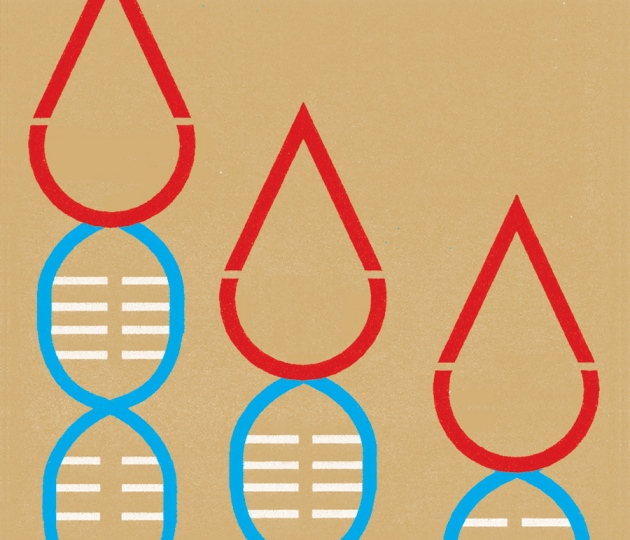The Ed's Up #45
 Cancer biomarkers: Written in blood (Longread)
Cancer biomarkers: Written in blood (Longread)
"When cancer cells rupture and die, they release their contents, including circulating tumour DNA (ctDNA): genome fragments that float freely through the bloodstream. By developing and refining techniques for measuring and sequencing tumour DNA in the bloodstream, scientists are turning vials of blood into 'liquid biopsies' — portraits of a cancer that are much more comprehensive than the keyhole peeps that conventional biopsies provide. Taken over time, such blood samples would show clinicians whether treatments are working and whether tumours are evolving resistance." (Image: Oliver Munday) How Did You Get Five Fingers?
How Did You Get Five Fingers?
Your arms and toes were sculpted from tiny buds of flesh when you were just six weeks old. These events are orchestrated by three molecules. They mark out zones in the embryonic hand where fingers will grow, and the spaces in between that are destined to die. Without this trinity, pianos and keyboards wouldn’t exist, jazz hands would be jazz palms, and giving someone the finger would be impossible. And they work in a way that crytographer Alan Turing predicted way back in 1952. (Image: Rhodesj)
 Octopus Cares For Her Eggs For 53 Months, Then Dies
Octopus Cares For Her Eggs For 53 Months, Then Dies
This octopus sat on her eggs for 4.5 years, never leaving and probably never eating. At the end of it, she died. These sacrificial brooding periods are common to octopuses, but this one is the longest seen in any animal. No mother could give more. (Image: MBARI)
 Do Beaked Whales Have Internal Antlers?
Do Beaked Whales Have Internal Antlers?
"The magnificent pronged antlers growing from the skull of a male red deer are billboards. Their size reveals his strength and fighting ability to other males, and his health and quality as a mate to females. They’re highly visible, as befits their role in signalling. What use, after all, is a billboard that you can’t see? But what if that wasn’t necessary? What if an animal had a way of “seeing” inside a rival’s body? Would antlers need to be visible at all?" (Image:NOAA Photo Library)
 Narcolepsy Paper Retracted
Narcolepsy Paper Retracted
This is an update of a story I wrote for Nature News about a new paper, published in Science Translational Medicine, which seemed to confirm narcolepsy as an autoimmune disease. It has now been retracted. (Image: Boghog2)
More good reads
- “For fifteen years, Richard Norris had a face too hideous to show. Then, one day, a maverick doctor gave him a miracle too fantastic to believe: a face transplant. What's it like to live with a face that wasn't yours—and that may never quite be?” Amazing story by Jeanne Marie Laskas
- The largest Ebola outbreak is not a global threat, but still a huge problem for west Africa. A great explainer by Declan Butler. Meanwhile, Sara Reardon reports about the problems that health workers are facing on the frontlines. And Peter Piot reflects on nearly 40 years of investigating this virus.
- Great read on caviar poaching, and the bizarre-looking paddlefish, from Michelle Nijhuis.
- This Cosmo profile of the wonderful Emily Graslie has a picture of flesh-eating beetles devouring a goose, and it's therefore THE BEST Cosmo article ever.
- Why are disgraced doctors running our drug trials? Outstanding investigative journalism from Peter Aldhous.
- Explorer George Kourounis talks about descending into a hellpit that's been on fire for 40 years. Stunning photos.
- "The mother became a mosaic when she was a tiny clump of embryonic cells." By Carl Zimmer.
- Wow. Mum flies west, dad flies east, & the hybrid bird flies down the middle! Like flying pink snapdragons. By Elizabeth Preston.
- Koba from Dawn of the Planet of the Apes was the antithesis of bonobo behaviour. By Brian Hare and Vanessa Woods.
- “A man walks into a bar”. This is funny and perfect.
More good links will be released in tomorrow's linkfest on Not Exactly Rocket Science
You can also follow me on Twitter, find regular writing on my blog. If someone has forwarded this email to you, you can sign up yourself.
And that's it! Thanks for reading.